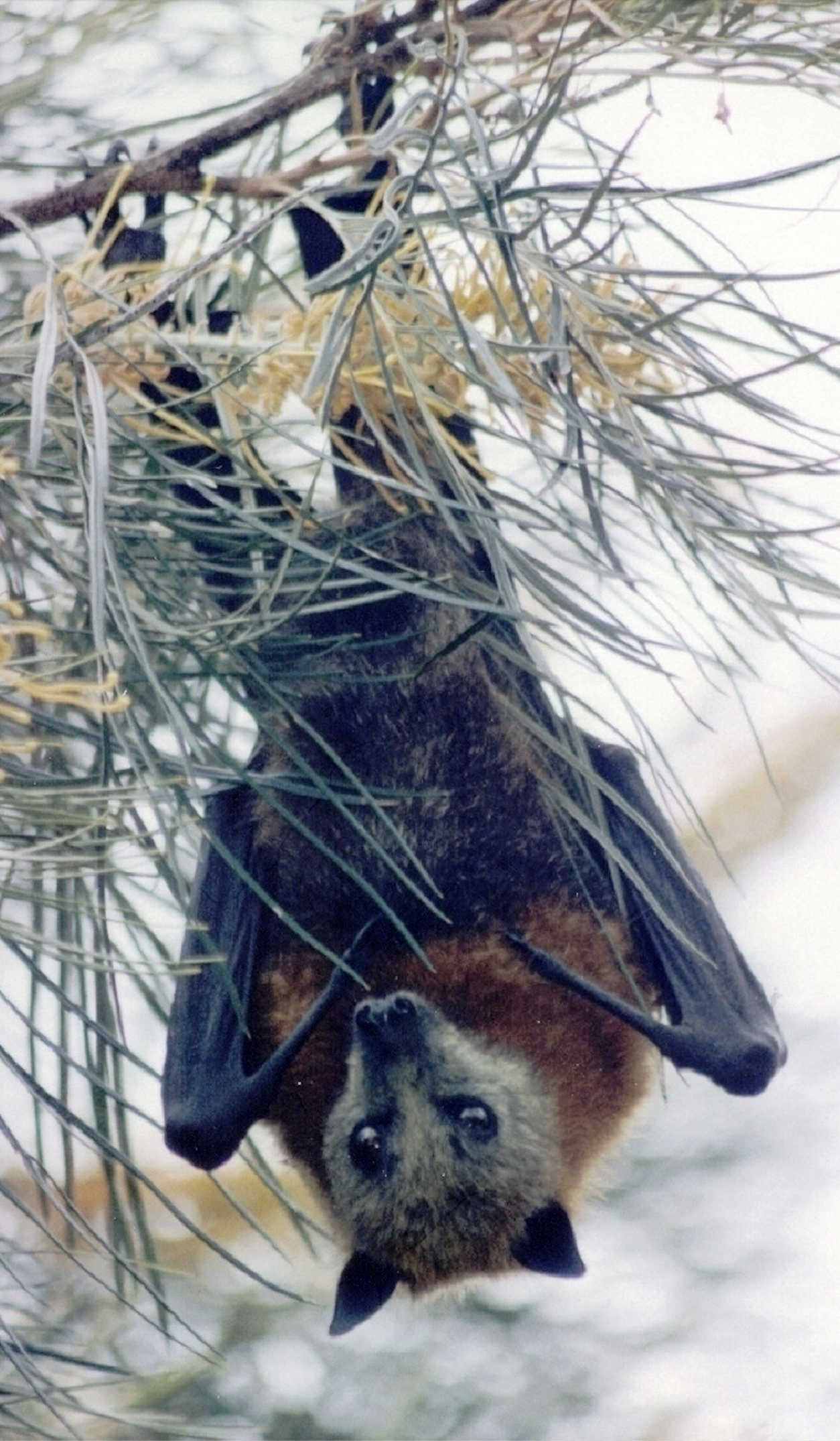Grey-headed flying fox: nature’s misunderstood night wanderer
Nature Watch by Don McGlusky of Diddillibah
THE Grey Headed Flying Fox or Fruit Bat (Pteropus poliocehalus) is the largest Australian bat species with a wing span up to one metre and weighing up to a kilogram. Colonies of these bats range from Bundaberg to Melbourne with a couple of colonies in North Queensland and South Australia. They do not have a tail but have claws on their first and second digits. The head is simple in form, with the characteristic ‘dog-like’ appearance of the genus. It relies on smell and, predominately, sight to locate its food (nectar, pollen and native fruits) and thus has relatively large eyes for a bat. Their lifespan is about fifteen years.
The females give birth mostly from September to November. Only one “Pup’ is born each year and is carried by the mother, even when foraging, for the first three or four weeks after which it remains in the nursery. The young are capable of flight by January and are fully weaned by late March. The main predator of the bats are snakes and there are always snakes residing in the colonies. Strangely the other bats don’t seem very concerned when one of their number is snatched.
People who work with bats are inoculated for Rabies as a result of a couple of deaths a few years ago from the Lyssavirus, being one of the viruses’ bats can carry. Also, at that time some horses died which was put down to the horses eating pasture contaminated by bat urine. Due to the loss of their native food trees, it has brought these bats into conflict with orchardists requiring them to implement expensive strategies such as netting to protect their crops. Now these bats are protected by the EPBC Act and other various state acts and bodies. A full account of these complex creatures requires a significant article, well beyond what can be supplied here.

